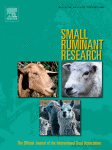Ver ítem
- xmlui.general.dspace_homeCentros Regionales y EEAsCentro Regional Patagonia NorteEEA BarilocheArtículos científicosxmlui.ArtifactBrowser.ItemViewer.trail
- Inicio
- Centros Regionales y EEAs
- Centro Regional Patagonia Norte
- EEA Bariloche
- Artículos científicos
- Ver ítem
Characterization of camel fibers in regions of Kazakhstan and Uzbekistan
Resumen
To generate information on Central Asian camel fiber quality, fiber samples of 712 camels from Kazakhstan and Uzbekistan were characterized. Fixed effects involved geographical location, animal age, sex, coat color and species. Camel species are Bactrians (Camelus bactrianus), dromedaries (Camelus dromedarius) and crosses between both species, hereafter referred as hybrids. Fiber traits included clean fine fiber yield (CY), mean fine fiber diameter (MFD),
[ver mas...]
To generate information on Central Asian camel fiber quality, fiber samples of 712 camels from Kazakhstan and Uzbekistan were characterized. Fixed effects involved geographical location, animal age, sex, coat color and species. Camel species are Bactrians (Camelus bactrianus), dromedaries (Camelus dromedarius) and crosses between both species, hereafter referred as hybrids. Fiber traits included clean fine fiber yield (CY), mean fine fiber diameter (MFD), mean fine fiber diameter coefficient of variation (MFD CV), fine fiber curvature (Curv) and fine fiber staple length (SL). The arithmetic averages of CY, MFD, MFD CV, Curv and SL were respectively 37.3%, 18.0 μm, 30.6%, 87.7 °/mm and 46.0 mm for Bactrians; 29.1%, 21.2 μm, 30.3%, 78.2 °/mm and 52.7 mm for dromedaries; and 42.7%, 17.9 μm, 29.5%, 89.9 °/mm and 47.2 mm for hybrids. Significant age by species interaction was detected for all traits. Overall, Bactrian camels had higher CY, lower MFD, higher Curv and lower SL than dromedaries (P < 0.05). The geographical locations significantly differentiated CY and Curv but not the other traits; thus, for the locations studied little could be gained by looking into location variability when planning genetic improvement programs. There were no significant sex differences for all the studied traits, whereas significant differences due to the color of the coat were found only for Curv. The residual phenotypic correlations among CY, MFD and Curv were all high and would be favorable for selection purposes. Likewise, the residual phenotypic correlations between each of these variables with SL would be unfavorable if selection targets an increased SL. The study detected heterogeneity for most fiber quality traits, suggesting that a base is in place for fiber quality improvement.
[Cerrar]

Autor
Iñiguez, Luis;
Mueller, Joaquin Pablo;
Ombayev, A.;
Aryngaziyev, S.;
Yusupov, S.;
Ibragimov, A.;
Suleimenov, M.;
El-Dine Hilali, M.;
Fuente
Small ruminant research 117 (1) : 58-65. (March 2014)
Fecha
2014-03
ISSN
0921-4488
Formato
pdf
Tipo de documento
artículo
Palabras Claves
Derechos de acceso
Restringido
 Excepto donde se diga explicitamente, este item se publica bajo la siguiente descripción: Creative Commons Attribution-NonCommercial-ShareAlike 2.5 Unported (CC BY-NC-SA 2.5)
Excepto donde se diga explicitamente, este item se publica bajo la siguiente descripción: Creative Commons Attribution-NonCommercial-ShareAlike 2.5 Unported (CC BY-NC-SA 2.5)

